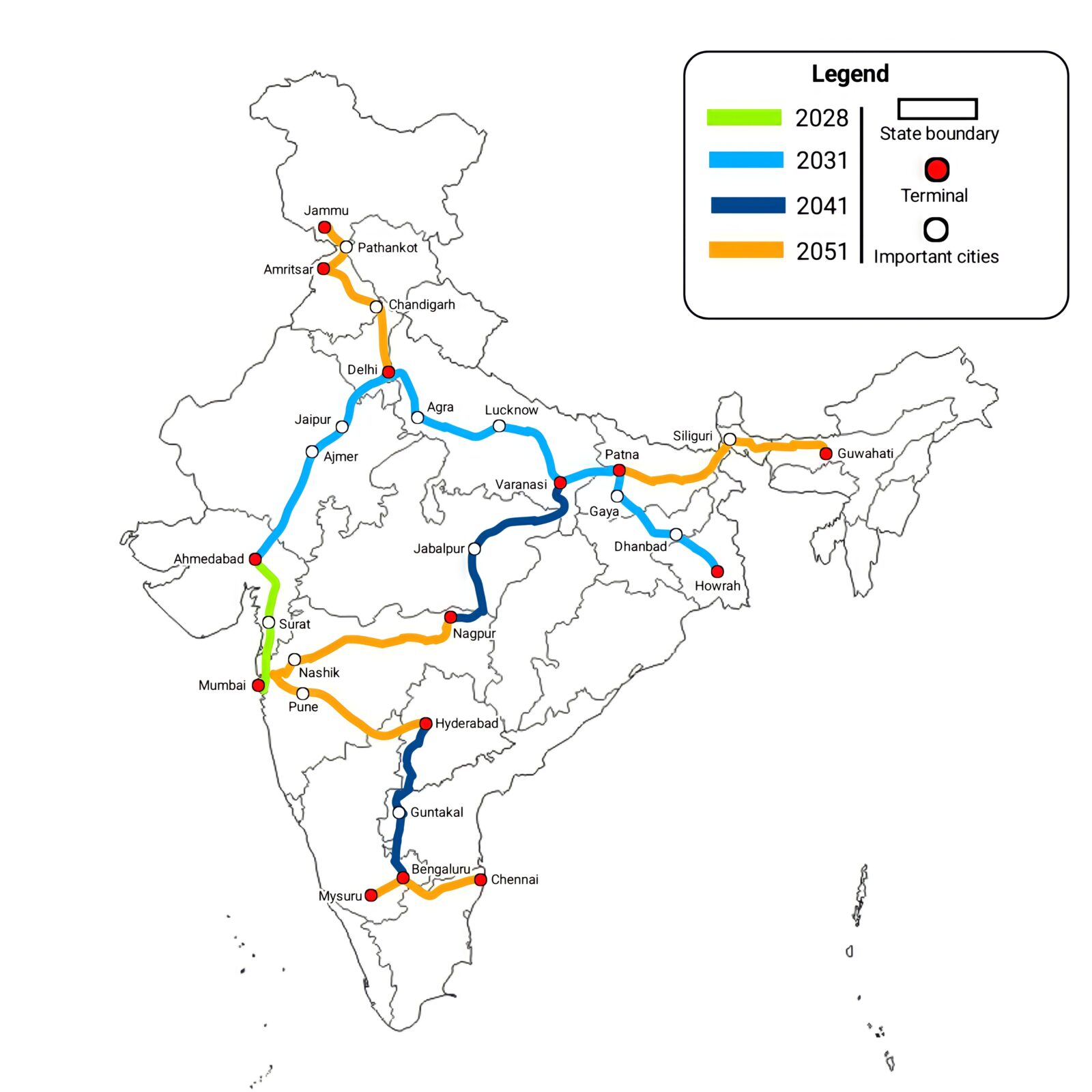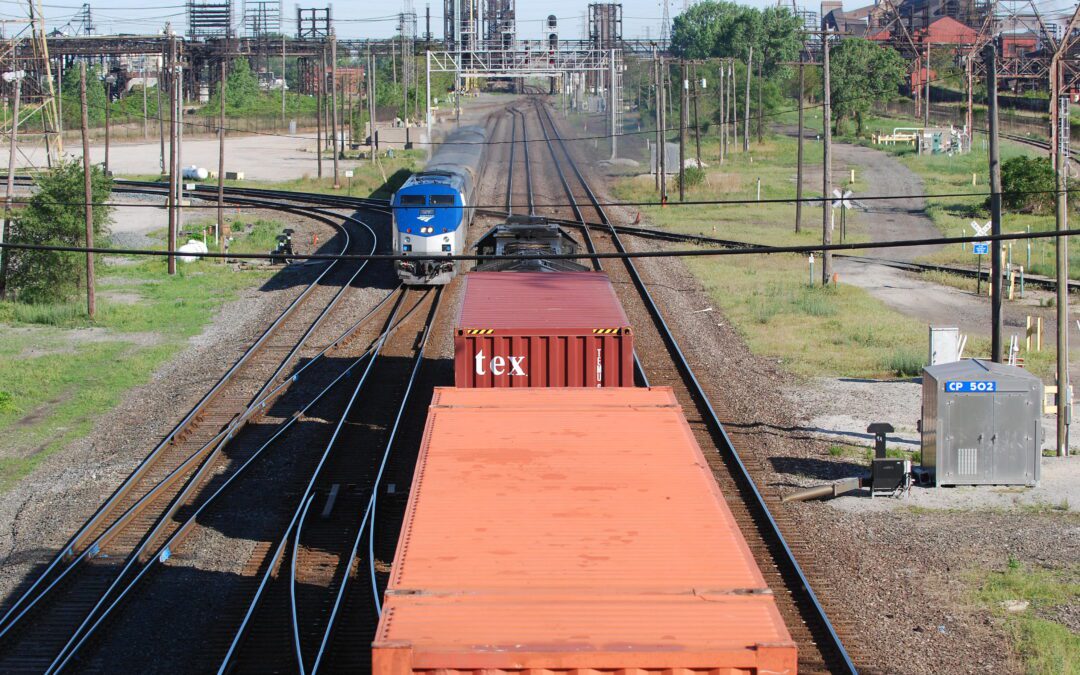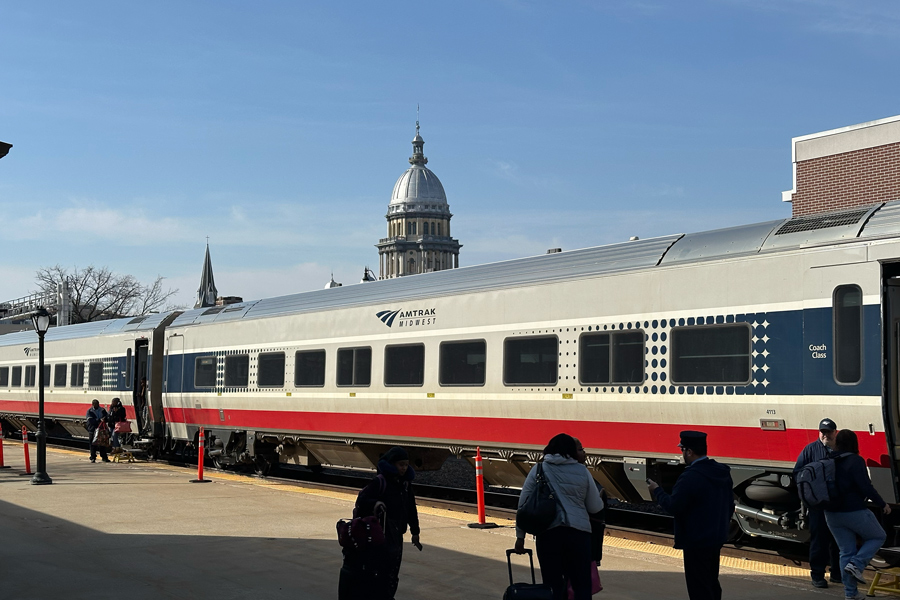Engineering Firm Chosen to Design Critical High-Speed Rail Segment in California HDR has been awarded a five-year contract to deliver engineering and design services for a 54-mile segment between Palmdale and Victorville. This is a critical connection between...
India took a big step forward in constructing its first high-speed rail line this week. The India National High Speed Rail Corporation signed a memorandum of understanding with the Tokyo-based Japan Railway Track Consultants Company for track-design work on a 72-mile segment of high-speed line. It’s part of a 316-mile line that will run from Mumbai to Ahmedabad, with 12 intermediate stops.
Construction on the line began earlier this year. The projected completion date for the full line is 2028. Its estimated cost is $15 billion.
India’s system will use modified Japanese Shinkansen E5 bullet trains with a passenger capacity of 750 people. The trains, running at maximum speeds of nearly 220 mph, will have an operational speed of about 200 mph. More than 90 percent (286 miles) of the tracks will be on elevated viaducts running roughly 11 to 16 yards above the ground. Nearly six miles of the line will be bridges. About 16 miles will be tunnels, including a tunnel of more than four miles that will be built underwater to preserve a nearby flamingo and mangrove sanctuary.
The trains are expected to depart every 20 minutes during peak hours, and there will be up to 35 trains each day, in each direction.
This project is the first high-speed line in what will be a vast expansion of high-speed rail in India over the next few decades. More than 3,000 miles of high-speed line are in the planning stages. Another 1,500 miles of line have been proposed in a draft of the nation’s “National Rail Plan,” released in 2020 by India’s Ministry of Railways.
HSR can drive the growth of green jobs in the U.S.
India’s plans mean that HSR will soon be pivotal to the transportation systems of the two most populous countries in the world.
India and China both have about 1.4 billion people. Together, they account for more than a third of the global population. China has already built roughly 26,000 miles of high-speed rail—all of it since 2008. And it’s on track to have more than 43,000 miles of HSR by 2035.
It can’t be emphasized enough that the worldwide growth of HSR is a prime opportunity for U.S. industry. As the case of India makes clear, Japanese companies are reaping big returns from the expertise in train and track design that they’ve developed across six decades. (Japan launched the first HSR system in the world in 1964; its system remains the gold-standard for safety, with zero injuries or fatalities since its debut.)
The U.S. lags, but there are still plenty of incentives to invest in our train manufacturing and engineering capacities. As demand for trains and new high-speed lines spikes globally—and as countries commit to lowering their greenhouse-gas emissions—HSR will be a key driver of “green jobs” over the coming decades.
On that point, it’s worth noting that the expansion of China’s HSR network is helping us understand just how green those green jobs are, and how high-speed trains help slash greenhouse-gas emissions.
A study published in October, for example, found that the HSR network in China cut annual greenhouse-gas emissions from the country’s transportation sector by 1.75 percent. But the source of the reduction was a surprise.
High-speed trains freed up capacity on the conventional railroads, so trains carried more freight. And railroads are a far greener shipping method than highways.
That’s something U.S. policymakers should take into account as we struggle with supply-chain issues and seek ways to address climate change. China’s example suggests that dedicated HSR lines create wins on multiple levels. They open up more capacity for freight trains on conventional tracks—which takes trucks off the roads and slashes greenhouse gas emissions.
But why didn’t HSR create an even greater reduction in greenhouse-gas emissions—especially since it resulted in a significant reduction in cars on the road?
The answer goes back to a heavy reliance on fossil-fuels to power the trains. China still burns a lot of coal to generate electricity. “In greener electricity conditions,” the authors write, the greenhouse-gas effects of shifting drivers to high-speed trains would double.
Which underscores one of the great truths that climate change makes clear: It’s all connected. We need a big-picture view; we need a lot of different tools; and we need synergies. High-speed trains will never be enough in themselves. But they are a powerful tool for driving the kinds of systemic changes—in land-use and development patterns, in public-transit investments—that simultaneously improve our quality of life, create good (and green) jobs, and help us fight climate change.
The Latest from HSRA
Our Latest Blog Posts
Check out the latest news, updates, and high speed rail insights from our blog!




